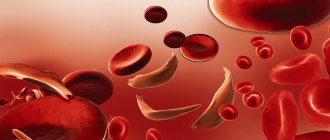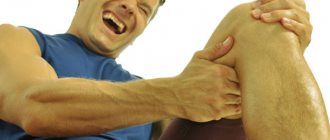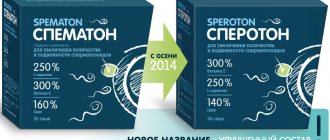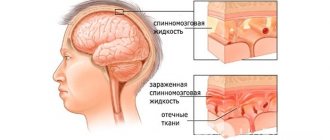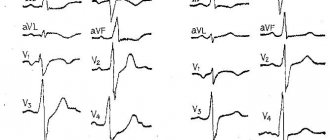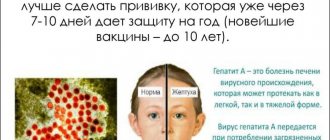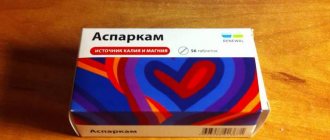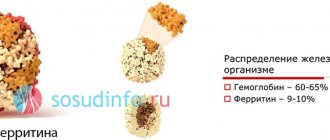Spasmophilia (tetany) is a painful condition in which there is increased neuromuscular excitability with a tendency to convulsions and spastic manifestations, usually detected in early spring during a period of increased insolation. Occasionally occurring in adults, spasmophilia primarily affects children aged 6 months to 3 years, premature babies and those who are bottle-fed or mixed-fed. Spasmophilia occurs when there is a calcium deficiency in the child’s body and is often combined with rickets.
Causes of spasmophilia in children
Spasmophilia develops as a result of a lack of calcium in the blood due to taking high doses of vitamin D in the treatment of rickets or with increased insolation and excessive formation of this vitamin in the skin. Its overproduction in the body has a negative effect on the functions of the thyroid gland, provokes the absorption of calcium and phosphorus salts in the intestine and their further reabsorption (reabsorption) in the renal tubules, which causes alkalosis. Active deposition of calcium in the bones leads to a decrease in its amount in the blood - hypocalcemia, and also increases neuromuscular excitability, leading to seizures.
Main types
Neurogenic tetany syndrome has a negative effect on the autonomic nervous system.
This is expressed in increased excitability, a tendency to sweat and rapid heartbeat. As for the respiratory organs, it is not possible to detect any noticeable changes here. But this does not apply to those cases that include laryngospasm in children, which is also considered one of the forms of this disease.
Often on the ECG you can find such a disorder as an increase in the S-T interval. This is due to a lack of calcium in the blood, and after an intravenous infusion of this substance, all heart parameters return to normal.
Gastrogenic tetany is a form in which there are disturbances in the digestive system, and they can be both secretory and motor. In some cases, they are secondary, but they can still be primary, that is, it is against their background that the disease begins to develop.
There are no changes in the skeletal system.
And finally, tetany is often combined with epilepsy, manic psychoses, and increased mental excitability. There is often a tendency to neurasthenic and hysterical reactions.
Symptoms of latent spasmophilia
The disease can have a hidden (latent) or obvious form. The latent form of spasmophilia in children is very difficult to determine - they are actually healthy, they have normal physical and psychomotor development, but they often show symptoms of rickets. There are a number of symptoms characteristic of spasmophilia that confirm its latent form. Let's name some of them:
- Chvostek's sign. It is characterized by contraction of the facial muscles when lightly tapping the cheek between the corner of the mouth and the earlobe along the trunk of the facial nerve;
- Weiss's sign. It is characterized by the occurrence of contraction of the muscles of the forehead and eyelids when tapping with a percussion hammer in the area of the edge of the orbit from the outside;
- Trousseau's sign. When the shoulder is intensively pulled with a tourniquet or cuff, a convulsive contraction of the hand muscles occurs in the overtightened arm. This leads to the position of the hand in the form of an “obstetrician’s hand”. Convulsions in spasmophilia are preceded by a feeling of numbness and pain in the fingers;
- Maslov's symptom. In children suffering from spasmophilia, unlike healthy ones, when a needle is pricked in the leg, not only rapid breathing is observed, but also apnea (short-term cessation of breathing) recorded by a pneumograph.
The latent form of spasmophilia in children is determined quite often. Under the influence of certain factors, such as fear, vomiting, sudden exposure to sunlight, or increased temperature due to an infectious disease, it can become obvious. If spasmophilia is detected, treatment must be carried out immediately.
Diagnostics: instrumental methods and syndromes
Diagnosing manifest spasmophilia is not a complicated process; clinical and radiological signs of rachitic symptoms and confirmation of cases of convulsions and spasms are taken into account.
In case of latency, it is necessary to carry out mechanical or galvanic skin tests to determine the level of nervous and muscle activity, while identifying the presence of symptoms:
- Chvosteka - when you tap with a finger or a hammer at the exit of the branches of the facial nerve - the cheekbones, a twitching occurs in the corner of the eye or mouth;
- Trousseau's syndrome - when the neurovascular bundle of the shoulder is compressed, the muscles of the arm involuntarily contract, bringing it into the “obstetrician’s hand” position;
- Lyust's symptom - tapping in the area of the head of the fibula, where the peroneal nerve exits, causes flexion of the foot with its abduction to the side;
- Erba - the impact of an electrical discharge on the median nerve of the elbow leads to compression of the fingers of the palm;
- Maslov's phenomenon is a reaction to a painful process, for example, an injection does not cause a long-term cessation of breathing; this does not happen to healthy children, since their breathing quickens at the moment of the injection.
Article on the topic: Remedy for hemorrhoids for women
Clinical picture and symptoms of obvious spasmophilia
An obvious form of spasmophilia in children can be expressed by laryngospasm, carpopedal spasm, eclampsia, or a combination of them:
- Laryngospasm. One of the most common forms of spasmophilia, also called “birthmark,” is characterized by a sudden acute narrowing of the glottis, with its possible partial or complete closure, which occurs during crying or fright. With moderate manifestations of laryngospasm, the child’s skin turns pale, cold sweat appears, and a change in voice occurs with hoarse or sonorous inhalation. The attack can last up to 2 minutes, then when breathing is restored, the child falls asleep. In the absence of adequate treatment for spasmophilia, attacks can be repeated; during severe laryngospasm, complete cessation of breathing and loss of consciousness are sometimes observed; in the most severe cases, death is possible;
- Carpopedal spasm. Symptoms of spasmophilia in this form of the disease are tonic spasms of the hands, feet and face. In this case, the child has bent arms at the elbows, drooping hands with the characteristic Trousseau symptom, bent legs and feet. Attacks of spasmophilia can last from several minutes to several hours, with reactive swelling of the hand and foot appearing; spasms of the respiratory muscles are also possible, threatening to delay and stop breathing, and spasms of the heart muscle with possible cardiac arrest;
- Eclampsia. The rarest and most dangerous form of spasmophilia, manifested by attacks of clonic-tonic convulsions that spread to the entire musculature. With a mild course, facial muscle spasms, the appearance of cyanosis, intermittent breathing and numbness of the child are characteristic. During a severe attack of spasmophilia, convulsions of the whole body, loss of consciousness, tongue biting, involuntary urination and defecation occur; the attack can last up to 25 minutes. In severe cases, respiratory and cardiac arrest is possible; eclampsia most often affects children in the first year of life.
These forms of spasmophilia pose a threat to the health and life of children and require emergency medical care for immediate resuscitation.
General description of the disease
The onset of the disease occurs at the same age as rickets, since these two diseases are etiologically and pathologically interrelated. The calciopenic state of tetany is accompanied by spasticity of the muscles of the face, larynx, and limbs.
In the modern world, 3.5–4% of children with obvious signs of rickets are susceptible to infantile tetany. Such a small percentage suggests that the number of severe cases of rickets has decreased.
In the case of an obvious form of spasmophilia, medical staff and parents must be fully prepared to assist the child in restoring vital functions.
The thetanoid state over a long period of time leads to disruption of the central nervous system, delayed mental development, and occasionally to death.
Spasmophilia in adults
Spasmophilia in adults is much less common than in children; it can be caused by the following reasons:
- Surgical operations to remove the parathyroid glands;
- Hemorrhages;
- Tumors that have a negative effect on the thyroid gland.
In some cases of spasmophilia in adults, its etiology remains unknown. Factors that provoke the detection of the disease in a latent form include pregnancy, lactation, infectious diseases, and nervous strain. To prevent attacks of spasmophilia, it is recommended to avoid stressful situations, be able to control your breathing and relax, and include foods containing calcium, magnesium and phosphorus in your diet.
What triggers the development of the disorder?
Due to a failure of calcium-phosphorus metabolism, a drop in the saturation of total and ionized calcium in the blood occurs, combined with alkalosis and hyperphosphatemia.
An increase in the amount of inorganic phosphorus is preceded by:
- feeding the baby with cow's milk, when excess phosphorus is partially excreted;
- overdose when taking vitamin D2 and D3 due to self-medication or due to uncontrolled prescription by a pediatrician;
- absorption of a large percentage of exposed skin from ultraviolet rays in the spring.
As a result of high levels of vitamin D metabolite:
- the quality of work of the parathyroid glands decreases;
- there is a change in the alkaline reserve of the blood, in advanced cases alkalosis occurs;
- the absorption of calcium and phosphorus in the intestine is stimulated or microelements are excreted in the urine in increased quantities, reabsorption of amino acids begins in the renal tubules;
- The baby’s bone tissue accumulates calcium above the limit, which is why its level in the blood decreases, and the amount of potassium increases, which leads to hyperkalemia.
Also, the causes of ultra-high muscular-nervous activity and convulsive readiness can be a decrease in the blood level of:
- magnesium;
- sodium;
- chlorides;
- vitamins B1 and B6.
In this case, any unfavorable factor - fear, screaming, crying, a viral disease, vomiting, a jump in temperature can provoke a convulsive attack.
Children who feed on mother's milk almost never suffer from spasmophilia; the risk group is artificial babies and premature babies.
Treatment of spasmophilia
When diagnosing spasmophilia in children, the age of the child, the time of year, the presence of signs of rickets are taken into account; laboratory tests determine the symptoms of hypocalcemia, hypophosphatemia, and metabolic alkalosis.
In the treatment of spasmophilia, relief of convulsive syndrome is carried out with the help of anticonvulsants - seduxen, relanium, magnesium sulfate, gamma-aminobutyric acid. To restore calcium levels in the blood and eliminate alkalosis, use a 10% solution of calcium gluconate and 3-5% ammonium chloride. Subsequently, vitamin therapy is carried out, and after normalization of calcium levels in the blood, therapeutic doses of vitamin D are prescribed.
If an attack of laryngospasm develops, before the ambulance arrives, it is necessary to lay the patient on a hard surface, ensure rest and access to air, sprinkle the face and body with cold water, ammonia or other means to cause irritation of the nasopharyngeal mucosa. To stop an attack of spasmophilia, doctors administer a solution of calcium and magnesium intravenously, and sedatives intramuscularly. If the measures taken are ineffective and there is no breathing, tracheal intubation is necessary, as well as indirect cardiac massage when it stops.
Prevention of spasmophilia consists of timely diagnosis and adequate treatment of rickets.
What is tetany?
Spasmophilia also has a second name - tetany. It is characterized by an increased degree of excitability of the nervous system with frequent convulsive manifestations in the larynx and muscles of the extremities. Often, pathology is detected in the first few months after birth, since it is during this period that the minimum level of calcium in the blood is observed.
As a key sign of the disease, it is worth noting laryngospasm, characterized by rather difficult breathing, pale complexion, increased sweating and frequent fainting. In parallel with this, carpopedal spasm may also occur, in which limb cramps may be tormented for several hours. In more rare cases, other types of spasms are observed. And of course Trousseau's spots appear.
The most dangerous attack for a child’s life is an attack of eclampsia, which manifests itself in the form of limb spasms and laryngospasm. Frequent twitching of facial muscles, foam at the lips, involuntary urination and dizziness may occur. With these symptoms, it is important to provide timely medical attention, since the likelihood of death is high.
First aid rules for a child having a seizure
Regardless of the form and severity of the baby’s symptoms, it is necessary to urgently show a doctor. However, the child can be helped.
It is recommended to place the baby on something solid. You should not carry it in your arms, pressing it to yourself, as this only blocks access to air. It is better to remove clothes that restrict movement and open the window slightly, providing the child with a sufficient amount of oxygen.
If you lose consciousness, you can sprinkle cool water on your baby's face. If the attack is accompanied by impaired activity of the myocardium and respiratory muscles, it is recommended to perform a heart massage or use artificial respiration techniques.
Degrees of symptom manifestation
In most cases, tetany manifests itself in infancy when suffering from jaundice and various infectious diseases, including in children born prematurely. At birth, this disease can be caused by both insufficient and excessive intake of calcium into the human body. This disease is associated with:
- with insufficiency of vitamin D or calcium supplied through breast milk at the time of feeding;
- if calcium or phosphorus is not absorbed by the body.
In this case, convulsions, respiratory signs, tachycardia, vomiting and even increased neuromuscular excitability may be observed.
There are three degrees of manifestation, in other words, intensity, of this symptom, which depend on the area of its distribution.
- I degree or Khvostek-I. This degree is characterized by twitching of all facial muscles that are innervated by the facial nerve.
- II degree or Khvostek II. In this case, only the muscles of the lips, the area around the mouth and nose are reduced.
- III degree or Khvostek III. It is considered the mildest degree, in which contractions of only those muscles located in the corners of the mouth can be seen.
We have discussed the question of what it is, Chvostek's symptom. They noted that there are several stages of the disease (to be more precise, there are three of them). Let's move on to their more detailed study. In the table below you will see the characteristics of each severity level separately.
When performing the test described above (tapping on the trunk of the facial nerve), the patient experiences an involuntary contraction of almost all groups of nerves in the face. The first degree of Chvostek’s symptom is quite easy to diagnose, since even with a weak effect on the facial nerve, significant changes can be noticed on the patient’s face.
The second degree is characterized by involuntary contractions of some muscles on the face (during the test). As a rule, the area of the nose and the corners of the lips respond to tapping on the trunk of the facial nerve.
The third degree sometimes goes simply unnoticed, since only the corners of the lips respond to the test. When diagnosing Chvostek's symptom, you need to be extremely careful. Even at the third stage, the patient needs qualified medical care.
To recognize a dangerous disease called tetany, only the first degree Chvostek symptom plays a significant role. However, help is also necessary in less severe cases. The second and third degrees can occur in a number of diseases, which include:
- neurasthenia;
- hysteria;
- asthenia;
- exhaustion and others.
Carpopedal spasm and its features
A characteristic sign of spasmophilia is spasms of the muscles of the feet and hands. This condition is accompanied by the following symptoms:
- the feet and hands are cramped with tonic spasms, and the spasm can last from 2 hours to several days;
- the baby pulls the shoulders towards the body and bends the upper limbs at the joints as much as possible;
- the child’s fingers are clenched into a fist;
- the toes also curl inward.
Of course, constant muscle tension negatively affects the child’s condition - he experiences discomfort and pain, which leads to problems with sleep, constant crying, and increased excitability. Prolonged spasm is often accompanied by severe swelling of the hand or foot.
Possible complications
Parathyroid hormone deficiency can lead to a hypocalcemic crisis that lasts several hours without medical attention. Convulsions affect the vocal cords, bronchi, and cause respiratory failure. Pathology is capable of:
- form calcification of the muscles of the skeleton, internal organs, and brain;
- cause cataracts;
- affect the nail cornea;
- provoke hair loss.
Tetany during pregnancy affects labor, blood circulation in the placenta and gas exchange are disrupted, which leads to asphyxia (suffocation) of the fetus. Continuity of contractions is an indicator for surgical intervention (Cesarean section). The development of the syndrome in children entails psychological disorders and the manifestation of rickets. With laryngospasm, suffocation and complete cessation of breathing are possible.


